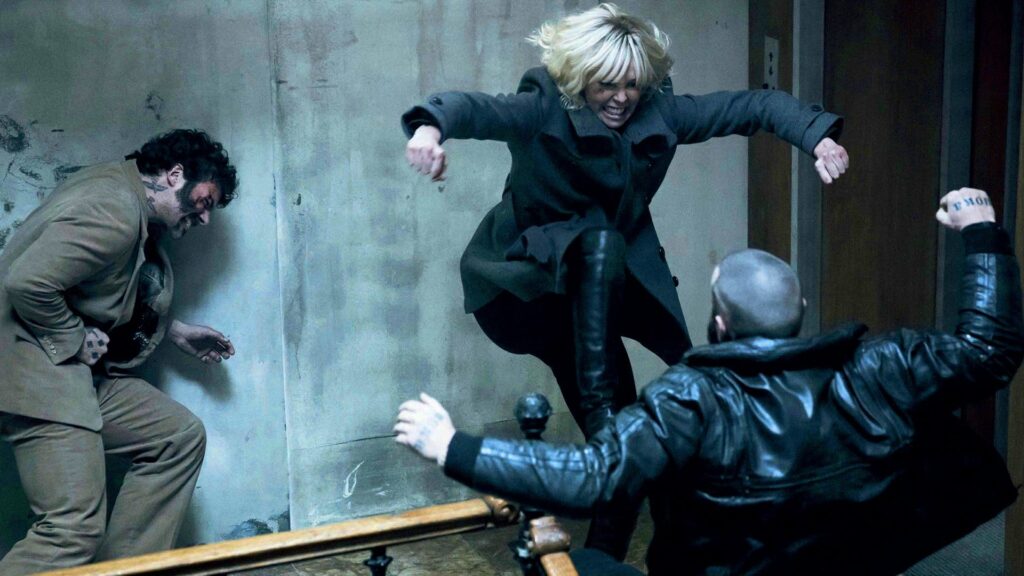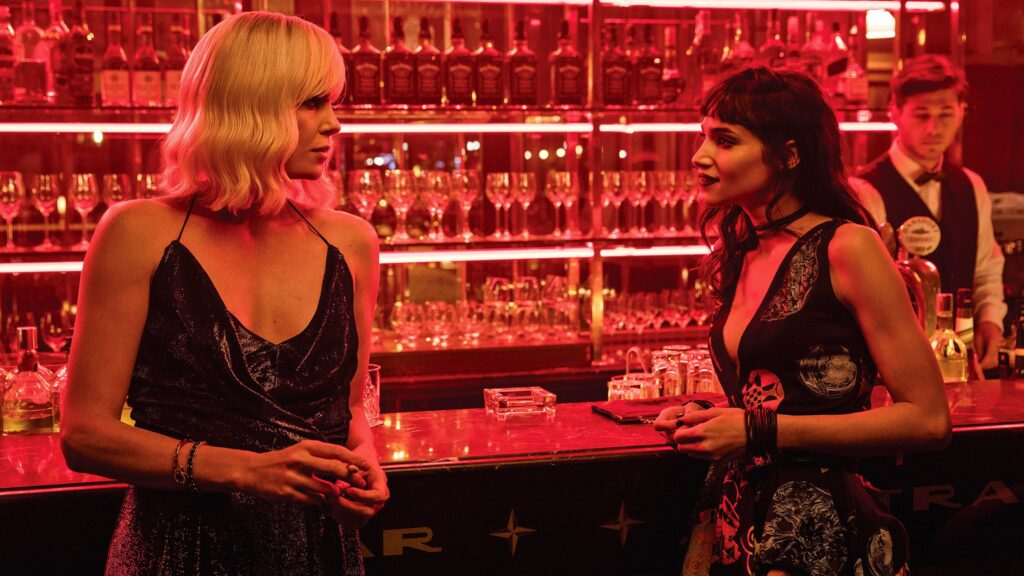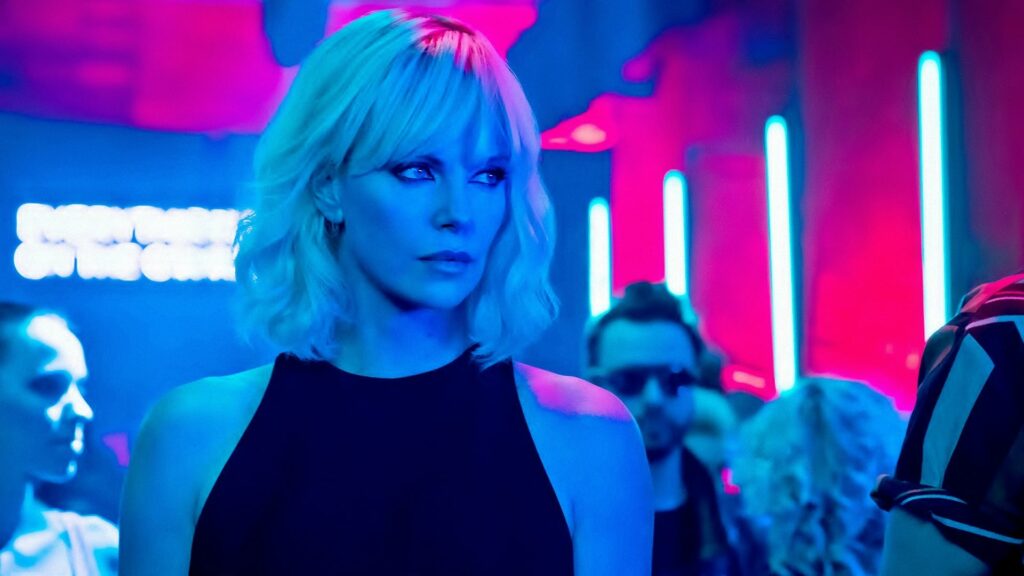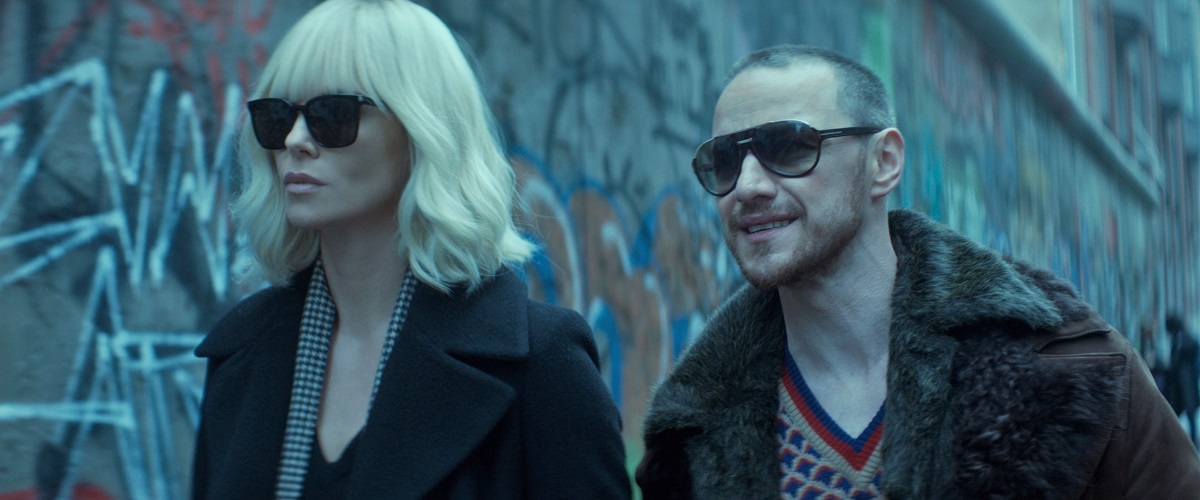Jane Wick
Atomic Blonde is the first film credited to director David Leitch, but it is not the first film he made. Leitch had a prolific run as a stunt double in the ‘00s. He also wrote and starred in a 2009 mockumentary about stuntmen, Confessions of an Action Star, that fizzled with bad reviews and no American distributor. Given Leitch’s later prominence, that film is bizarrely underseen: just 150 logged viewings on Letterboxd at the time of this writing.
But Leitch’s big credit prior to Atomic Blonde was John Wick, for which he was an uncredited co-director with Chad Stahelski. Stahelski and Leitch had created a stunts consulting company in 1997 and, several years later, a film production company sharing the name “87Eleven.” Keanu Reeves showed them a script for a starring vehicle he was shopping. Stahelski and Leitch talked Reeves into letting them not just choreograph the fight scenes but produce and direct the film. Both Leitch and Stahelski were hands-on in the making of the film, but the Directors Guild designated John Wick a Stahelski solo joint, and Leitch was given a Producer credit as consolation. You probably don’t need me to tell you that John Wick was a word-of-mouth sensation that turned into a mega-smash as it became a franchise. It reinvigorated American action movies, emphasizing detailed, choreographed fights shown in extended takes with fluid camera movement.

87Eleven became a hot brand in Hollywood, and Charlize Theron reached out to Leitch and Stahelski with her own script: An adaptation of spy thriller graphic novel The Coldest City by Anthony Johnston and Sam Hart. Stahelski took the reins on John Wick 2; Leitch took the director’s seat for the Theron project, eventually titled Atomic Blonde.
As someone who binged all of Matthew Vaughn’s films earlier this year, I am struck by how much the logline of Atomic Blonde sounds like a film Vaughn would make: An overqualified cast (including Vaughn vets James McAvoy and Sofia Boutella) lead a twisty, action-forward spy thriller about British agents trying to outsmart Soviets. And yet Leitch’s debut film is… better than all of Vaughn’s movies? They’re not even operating in the same space, really: Atomic Blonde is an “action movie” proper. And it’s much more concerned with “cool” than the “frothy fun” that Vaughn goes for (though Atomic Blonde is indeed very fun to watch).
The film follows a mission gone wrong for MI6 agent Lorraine (Theron) in Berlin during the fall of the Berlin Wall in 1989. The film picks up with an investigation after the mission: Lorraine recaps the fateful few days to some British and American intelligence leaders (including Toby Jones, John Goodman, and James Faulkner). We see the mission in flashback: Several days earlier, a KGB agent kills an MI6 agent and obtains a list of the identities of all spies working in Berlin, which has been written in microfilm and stored in a fancy watch. Lorraine is sent in to partner with Agent Percival (McAvoy) to recover the watch. While investigating, she meets and falls in love with rookie French agent Lasalle (Boutella). Lorraine also prepares to escort German defector “Spyglass” (Eddie Marsan) out of Soviet hands into safe territory.

Hanging over all of this is rumors of a double agent codenamed “Satchel” feeding plans for the mission to the KGB. We can figure pretty quickly that Satchel’s secret identity is one of the prominent players in the story, but the revelation of whom is strung out until the last few minutes of the film. (I guessed incorrectly, but it’s not exactly a huge surprise.)
Atomic Blonde’s story is a lot more complicated than it needs to be, which I attribute to its nature as a graphic novel adaptation. The way Leitch directs it, it’s more about the action set pieces than it is about the plot, which progresses in quick blurs between fights and chases. This is probably my biggest hangup with the film: As stylish and kinetic as it is, the actual story frankly calls for something a little talkier and more suspenseful.
But I can’t complain too much because the fight scenes really are that good. That 87Eleven formula works to perfection: The fights are shot with terrific spatial precision and composition, the choreography always satisfying as one move dynamically leads to another. It straddles a line between bluntly visceral and balletically graceful, somehow offering the satisfaction of both styles. I’m sure Martial-Arts Movie Primer author Andrew Milne could tell us with more precision exactly why it works, but it unquestionably does.
The coup de grace is a single-take, ten-minute fight scene that is so jaw-droppingly impressive I couldn’t possibly oversell it even if I tried. I can’t remember the last time I felt so overwhelmed at the technical achievement of what I was watching on the screen. About twelve times, I thought that the scene was about to end, only for it to continue further and further into another perfectly-executed mini-brawl, all part of the same shot. (There are a couple passes through dark spots that might be cheats, but even if they are, it hardly diminishes the impressiveness.)

The fight choreography is strengthened by some terrific instincts by Leitch on visual immersion. Even the non-combat scenes are lovely to look at: Neon-lit nightclubs, hazy cigarette smoke, rainy alleyways, and a hundred close-ups of Theron’s glorious, beautiful, cinematic face. The film is shot by cinematographer Jonathan Sela, a Leitch regular, and he applies a sickly chilliness to the visual timbre. Sela uses some harsh neon hues, but most of the color scheme is teals and grays that evoke pulpy Cold War paranoia and propaganda. The overall look is a slick, chromium machine that’s also full-bodied and roaring, kind of like a European sports car.
The cast is pretty great all around, but Theron in particular deserves credit for once again proving her movie star bona fides. Despite Lorraine being a thin protagonist in the script, Theron delivers a compelling and coherent character, with lots of nuance and expressiveness in some remarkable still and pensive acting during the non-fight scenes. And on top of the actual acting part, she executes the action with aplomb; part of the beauty and difficulty of long-take action cinema is it’s much harder to cut around stunt doubles. There are parts of this that I have no idea how they made without delivering genuine bodily harm to Theron.
Atomic Blonde is overall an exciting and satisfying film. The craft all around is great, but the fight scenes in particular are remarkable. It’s a bit over-plotted, but in a fun double-crossy sort of way. It’s my first David Leitch film but it has me excited to see the rest.
Is It Good?
Very Good (6/8)
Dan is the founder and head critic of The Goods. Follow Dan on Letterboxd. Join the Discord for updates and discussion.


6 replies on “Atomic Blonde (2017)”
I actually probably prefer this to any John Wick, and definitely to any besides Chapter 2. Only semi-serious problems, as I recall, are how it elects to be more structurally opaque than its story probably deserves, and Leitch’s customarily (then-customarily?) irritating use of music unnecessarily anchored to the diegesis–anchored by rocks, rocks attached by chains–so that we wind up with really annoying sound mixing choices between cuts because the “sound” is “farther away” now. Drives me nuts. (See also the Kaleida sequence in John Wick 1.)
Oh, and 2017.
Oopsy doopsy. Fixed. Thanks!
Yeah the music is noteworthy. I didn’t hate the needle drops but something felt off about them in a way I couldn’t put my finger on. Maybe it’s what you’re describing.
I remember seeing this film and enjoying it, despite (SPOILER ALERT) the protagonist being a dirty-dealing, back-stabbing Yankee double-crosser betraying MI6, so it’s almost certainly Very Good indeed if I’m willing to enjoy the film despite that major handicap.
On a less ardently-jingoistic note of patriotism, the film being set in AD 1989 poses the intriguing question of exactly which version of Bond, James Bond might have shown up, had 007 not (presumably) been busy elsewhere with some mission.
(A word of explanation: 1989 falls under the ‘Great Hiatus’ between Mr Timothy Dalton’s last Bond film – LICENSE TO KILL, 1987 – and Mr Pierce Brosnan’s first – GOLDENEYE, 1995 – so a case could be made for either, though not both, versions showing up in a story set in 1989).
The things we needs do ponder!
Haha! I love your indignancy. Perhaps you share Matthew Vaughn’s resentment of “the States” as I hear you all call us. I did add in a spoiler warning to your comment just in case a reader might not want the final twist of the film revealed, amusing though your righteous anger is.